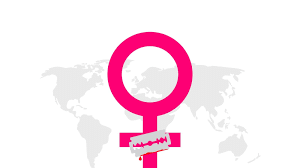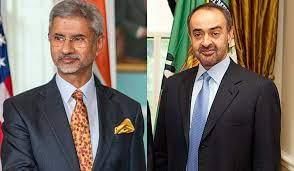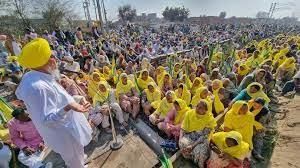Weekly Current Affairs (15th to 21st February 2024) Part - 1 | General Test Preparation for CUET UG - CUET Commerce PDF Download
Female Genital Mutilation
What is Female Genital Mutilation?
- Female genital mutilation (FGM) encompasses all procedures that involve altering or injuring the female genitalia for non-medical reasons. It is internationally recognized as a violation of human rights, health, and the integrity of girls and women.
- FGM is concentrated primarily in Western, Eastern, and North-Eastern Africa, as well as select Middle Eastern and Asian nations. However, due to increased migration, FGM has become a global concern, affecting girls and women in Europe, Australia, and North America.
- Girls who undergo FGM experience short-term complications such as severe pain, shock, excessive bleeding, infections, and difficulty in passing urine, as well as long-term consequences for their sexual, reproductive, and mental health.
- As of now, there is no legislation in India that bans the practice of FGM. While the Ministry of Women and Child Development stated in 2017 that there is no official data supporting the existence of FGM in India, unofficial reports suggest that FGM is prevalent among the Bohra community in Maharashtra, Kerala, Rajasthan, Gujarat, and Madhya Pradesh.
- Eradicating FGM poses several challenges, including deeply ingrained cultural and social norms, lack of awareness and education about its harmful consequences, and limited data collection and reporting on its prevalence.
- Global initiatives towards the eradication of FGM include programs by the United Nations Population Fund and UNICEF since 2008, the designation of 6th February as the International Day of Zero Tolerance for Female Genital Mutilation in 2012, and the goal of eliminating FGM by 2030 as part of Sustainable Development Goal 5.3.
Way Forward
- Legislation and Policy Enforcement: Strengthening existing laws to explicitly bans FGM and imposes penalties for those who perform or facilitate it.
- Governments should ensure effective enforcement of these laws through law enforcement agencies.
- Awareness and Education: Launching a comprehensive awareness campaigns to educate communities about the harmful effects of FGM on physical, psychological, and sexual health.
- These campaigns should target not only individuals within practicing communities but others as well.
- Inclusion in Human Rights Framework: There is a need to ensure that efforts to combat FGM are grounded in human rights principles and respect the rights of women and girls.
- Advocating for the inclusion of FGM prevention and response measures in international human rights framework is the need of the hour.
UPI Services in Sri Lanka and Mauritius
- Recently, the Prime Minister of India, along with the President of Sri Lanka, Mr. Ranil Wickremesinghe, and the Prime Minister of Mauritius, Mr. Pravind Jugnauth, jointly inaugurated the launch of Unified Payment Interface (UPI) services in Sri Lanka and Mauritius, as well as RuPay card services in Mauritius.
- This initiative aims to enable seamless digital payments among citizens of the three countries, thereby fostering stronger economic ties. The projects have been developed and executed by NPCI International Payments Ltd (NIPL), in collaboration with partner banks and non-banks from Mauritius and Sri Lanka, under the guidance and support of the Reserve Bank of India.
What are RuPay and UPI?
- RuPay is a payment system and financial services product developed by the National Payments Corporation of India (NPCI). It is a domestic card payment network that can be used at ATMs, POS devices, and e-commerce websites across India. RuPay has launched various card variants catering to different segments of society, including government scheme cards, RuPay Classic, Platinum, and Select variant cards designed for the masses and affluent customers. After Nepal, Bhutan, Singapore, and the UAE, Mauritius has become the first non-Asian country to issue RuPay cards. The use of RuPay technology will allow banks in Mauritius to issue RuPay cards locally through the Mauritius Central Automated Switch (MauCAS) card network, a state-of-the-art digital hub fully owned and operated by the Bank of Mauritius for routing payments among operators.
- UPI, on the other hand, is a digital and real-time payment system developed by NPCI in 2016. It is built over the IMPS infrastructure and enables users to instantly transfer money between any two parties' bank accounts. UPI allows for the consolidation of several banking features, seamless fund routing, and merchant payments into a single mobile application. In 2023, over 100 billion transactions worth Rs 2 lakh crores were conducted via UPI. Countries that accept UPI payments include France, UAE, Mauritius, Sri Lanka, Singapore, Bhutan, and Nepal.
How will RuPay and UPI Benefit the Users in Mauritius and Sri Lanka?
Facilitating Seamless Transactions:
- Users in Mauritius and Sri Lanka will experience convenience in making transactions, both domestically and internationally, through the adoption of RuPay and UPI.
- With RuPay cards and UPI connectivity, individuals travelling between India, Mauritius, and Sri Lanka can conduct transactions seamlessly, eliminating the need for currency exchange and reducing transactional complexities.
Enhanced Financial Access:
- RuPay cards will be accepted at ATMs and PoS terminals in Mauritius, expanding the accessibility of digital payments for users in the region.
- UPI connectivity in Sri Lanka enables users to make QR code-based payments at merchant locations, providing a convenient alternative to traditional payment methods.
Promotion of Financial Inclusion:
- The availability of RuPay cards and UPI services empowers individuals from diverse socio-economic backgrounds to participate in the digital economy, fostering financial inclusion.
- UPI transactions offer a cost-effective solution for users, reducing the expenses associated with traditional banking services and facilitating affordable financial transactions.
Strengthened Economic Ties:
- Seamless payment solutions contribute to the growth of trade and tourism between India, Mauritius, and Sri Lanka, fostering economic cooperation and collaboration.
- Increased digital transactions support local businesses by promoting cashless transactions, enhancing transparency, and reducing reliance on cash-based transactions.
- The launch of UPI and RuPay services will also strengthen the economic and strategic ties between the three countries, as part of India’s “neighbourhood first” policy and “SAGAR” (Security and Growth for All in the Region) vision.
Innovation and Technological Advancement:
- The introduction of RuPay and UPI reflects a commitment to embracing digital innovation, positioning Mauritius and Sri Lanka as progressive economies in the global digital landscape.
- By leveraging advanced payment technologies, users gain access to innovative financial solutions that empower them to manage their finances more efficiently and securely.
India’s Digital Public Infrastructure (DPI)
- The Digital Public Infrastructure (DPI) of India, also referred to as the India Stack, comprises a collection of open and interoperable platforms, each functioning as independent "blocks" that offer identity, payment, data sharing, and consent mechanisms for diverse digital applications.
- These platforms are designed based on principles such as user-centric design, policy objectives, the development of use cases, and engagement. Key components of India’s DPI include Aadhaar, DigiYatra, DigiLocker, and Account Aggregator (AA). The DPI is poised to facilitate economic transformation and promote inclusive growth. The modular layers of India Stack present opportunities for innovation, inclusion, and competition in the digital domain.
Supreme Court Invalidates Electoral Bonds Scheme
- The SC has ruled that the EBS violated the fundamental right to information guaranteed under Article 19(1)(a) of the Constitution.
Key elements of the SC's ruling include:
- The EBS and the amendments made to the Finance Act, 2017, the Representation of the People Act (RPA), 1951, the Income Tax Act, 1961, and the Companies Act, 2013, were deemed unconstitutional.
- Before these amendments, political parties were subject to stringent requirements, including the declaration of contributions above Rs 20,000 and a cap on corporate donations.
- The SC's judgement reinstated the legal framework before the Finance Act, 2017, in several statutes crucial to political party funding, such as the Representation of the People Act, 1951, and the Companies Act, 2013.
- The Finance Act, 2017 amendments exempted donations via Electoral Bonds from disclosure requirements, which the SC has struck down, emphasizing the importance of transparency and privacy balance.
- The Finance Act, 2017 amendments also removed the cap and disclosure obligations for corporate donations, which the SC has nullified, citing concerns about unchecked corporate influence on elections.
- The SC applied the proportionality test to examine whether the scheme violated the right to information of the voters and the transparency of the electoral process. The proportionality test is a crucial judicial standard to evaluate the balance between state action and individual fundamental rights.
- The SC dismissed donor anonymity as a legitimate state aim, prioritizing the voters' right to information under Article 19(1)(a) of the Constitution over anonymity. It emphasized the crucial role of the right to information in fostering participatory democracy and holding the government accountable.
- The SC highlighted the concept of the "double proportionality" test, which involves balancing competing fundamental rights, such as the right to information and the right to privacy. It underscored the importance of the state choosing the least restrictive methods for both rights and avoiding disproportionate impacts.
- The SC also highlighted the availability of less intrusive methods, such as the electoral trusts scheme, to achieve the state's objectives effectively.
- In light of the ruling, the State Bank of India (SBI) has been instructed to immediately cease the issuance of any further electoral bonds and to provide details of such bonds purchased by political parties since April 12, 2019, to the Election Commission of India (ECI). The ECI will subsequently publish all such information shared by the SBI on its official website.
- Electoral bonds within the validity period but not encashed by political parties must be returned, with refunds issued to purchasers by the issuing bank.
- The SC's ruling has far-reaching implications for political financing in India, emphasizing transparency, accountability, and the protection of fundamental rights.
India-UAE Relations
What are the Key Highlights of the Pact Signed Between India-UAE?
Interlinking of Digital Payment Platforms:
Interlinking of UPI and AANI:
- The two nations have signed agreements to interlink digital payment platforms - UPI (India) and AANI (UAE).
- This collaboration will enable seamless cross-border transactions between India and UAE, bolstering financial connectivity and cooperation.
Interlinking Domestic Debit/Credit Cards (RuPay and JAYWAN):
- Both nations have inked a pact to interlink domestic debit/credit cards - RuPay (India) with JAYWAN (UAE).
- This initiative is a significant step toward enhancing financial sector cooperation and promoting the universal acceptance of RuPay across the UAE.
- UAE’s domestic card JAYWAN is based on the digital RuPay credit and debit card stack.
Bilateral Investment Treaty:
- India and the UAE have signed a Bilateral Investment Treaty (BIT), which is seen as a “Key Enabler” for further investments in both countries.
- The UAE has been a major investor in India's infrastructure sector.
- In 2022-2023, the UAE was the fourth largest FDI (Foreign Direct Investment) investor in India. It has committed to invest USD 75 billion in India’s infrastructure sector.
Intergovernmental Framework Agreement on India-Middle East Economic Corridor (IMEC):
- It is aimed at fostering India-UAE cooperation and enhancing regional connectivity. The IMEC was announced on the sidelines of the G20 leaders’ summit in New Delhi in September 2023.
Energy Cooperation:
- Both sides have signed agreements on cooperation in the field of electrical interconnection and trade, which “opens new areas of collaboration in the field of energy, including energy security and energy trade.
- As the UAE is among the largest sources of crude and LPG, India is now entering into long-term contracts for LNG.
Cultural Cooperation:
- The two countries have signed a “cooperation protocol between the National Archives of the two countries” to restore and preserve archival material.
- Both nations aim to support the Maritime Heritage Complex at Lothal, Gujarat.
Gratitude for BAPS Temple Construction:
- India has expressed gratitude to the UAE for its support in granting land for the construction of the BAPS Temple in Abu Dhabi, highlighting the temple’s significance as a symbol of UAE-India friendship and cultural bonds.
Port Infrastructure Development:
- Agreements have been signed between RITES Limited and Gujarat Maritime Board with Abu Dhabi Ports Company to enhance port infrastructure and connectivity between India and the UAE.
Bharat Mart:
- The foundation stone of Bharat Mart, which will combine retail, warehousing, and logistics facilities at Jebel Ali Free Trade Zone in Dubai, was laid by the Indian Prime Minister.
- Bharat Mart can potentially play a key role in promoting exports from India’s micro, small, and medium sectors by providing them with a platform to reach international buyers in the Gulf, West Asia, Africa, and Eurasia.
Farmers Protest 2.0 and MSP
- In 2020, farmers protested against three farm laws passed by the government, at Delhi borders, leading to their repeal in 2021.
- These laws were -- The Farmers’ Produce Trade and Commerce (Promotion and Facilitation) Act, The Farmers (Empowerment and Protection) Agreement of Price Assurance and Farm Services Act, and The Essential Commodities (Amendment) Act.
What are the Key Demands of Farmers?
- The headline demand in the farmers’ 12-point agenda is for a law to guarantee Minimum Support Price (MSP) for all crops, and the determination of crop prices in accordance with the Dr M S Swaminathan Commission’s report.
- The Swaminathan Commission Report states that the government should raise the MSP to at least 50% more than the weighted average cost of production. It is also known as the C2+ 50% formula.
- It includes the imputed cost of capital and the rent on the land (called ‘C2’ ) to give farmers 50% returns.
- Imputed cost is used to account for the opportunity cost of using resources like land, labour, and capital.
- The imputed cost of capital accounts for the interest or returns that could have been earned if the capital invested in farming were instead invested elsewhere.
The other demands are:
- Full debt waiver for farmers and labourers;
- Implementation of the Land Acquisition Act of 2013, with provisions for written consent from farmers before acquisition, and compensation at four times the collector rate.
- A collector rate is the minimum value at which a property can be registered when buying or selling it. They serve as a reference point to prevent the undervaluation of properties and tax evasion.
- Punishment for the perpetrators of the October 2021 Lakhimpur Kheri killings;
- India should withdraw from the World Trade Organization (WTO) and freeze all free trade agreements (FTAs).
- Pensions for farmers and farm labourers.
- Compensation for farmers who died during the Delhi protest in 2020, including a job for one family member.
- The Electricity Amendment Bill 2020 should be scrapped.
- 200 (instead of 100) days’ employment under MGNREGA per year, the daily wage of Rs 700, and the scheme should be linked with farming;
- Strict penalties and fines on companies producing fake seeds, pesticides, fertilisers; improvements in seed quality;
- National commission for spices such as chilli and turmeric.
- Ensure the rights of indigenous peoples over water, forests, and land.
What is the Government’s Response?
- In November 2021, after repealing the three farm laws, the Indian Government announced to form a committee on MSP. Its purpose was to discuss MSP, promote zero-budget natural farming, and decide on cropping patterns. This committee was formed in July 2022 and hasn't yet produced any report.
- During a recent meeting between Cabinet ministers and farmer union leaders the government offered to create a new committee with representatives from agriculture, rural, and animal husbandry ministries.
- This committee would address farmers' demand for MSP for all crops. The government promised that this new committee would meet regularly and work within a set timeframe.
What are the Challenges with the Legalisation of MSP?
Forced Procurement:
- Mandating the government to procure all produce at MSP could lead to overproduction, causing wastage of resources and storage problems.
- It might also distort cropping patterns as farmers might prioritise crops with MSP over others, affecting biodiversity and soil health.
- If the government has to buy the produce because there are no buyers offering the MSP, it doesn't have the resources to store and sell large amounts of it.
Discrimination Among Farmers:
- Such a law could create disparities between farmers growing supported crops and those growing others.
- Farmers growing unsupported crops may face disadvantages in terms of market access and government support.
Pressure From Traders:
- During peak harvest times, prices for agricultural produce are typically at their lowest, benefiting private traders who buy at these times. Because of this, private traders resist any legal assurance of MSP.
Financial Burden:
- The government might face financial strain due to the obligation to procure all crops at MSP, leading to payment arrears and fiscal challenges.
Societal Implications:
- Distorted cropping patterns and excessive procurement could have broader societal implications, affecting food security, environmental sustainability, and overall economic stability.
What Initiatives can be Taken to Protect Income of Farmers instead of Legalising MSP?
- Experts suggest giving money directly to farmers instead of just relying on MSP. This way, farmers get a stable income no matter how the market is.
- It's about fixing the bigger problem of farmers not having enough money, rather than just guaranteeing prices for certain crops.
- Implementing direct income support could involve various strategies, such as:
- Direct Cash Transfers: Providing direct cash payments to farmers to supplement their income and alleviate financial stress.
- The Government can think of Expanding the PM KISAN Scheme by rolling in the entire price support package and fertiliser subsidy and into much higher PM-KISAN payments to farmers in a revenue-neutral manner.
- This scheme currently provides farmers with Rs 6000 per year in direct cash payments.
Insurance Schemes:
- Introducing insurance schemes that compensate farmers for income losses due to factors like crop failure, price volatility, or adverse weather conditions.
- Offering subsidies or grants to support agricultural inputs, equipment, technology adoption, and diversification into higher-value crops or alternative livelihoods.
- Price-Difference Payment Option: The government can also consider paying the price difference between the MSP and the rate at which the farmers sell.
- Haryana and Madhya Pradesh have tried this option under a scheme called Bhavantar Bharpai Yojana (price-difference compensation scheme).
- Under the MP's 'Bhavantar Bhugtan Yojana', the state government paid farmers the difference between MSP for crops and their average market rates. Farmers got money if they had to sell their produce in the open market below MSP.
What are the Concerns of Farmers Related to WTO and FTAs?
Market Access:
- Farmers are concerned that the FTAs and WTO regulations lead to increased competition from cheaper agricultural imports, which can undercut domestic prices and harm local producers.
- Farmers perceive these agreements as favouring multinational corporations and large-scale agribusinesses over small and medium-sized farmers.
Imported Goods:
- These agreements lead to the influx of subsidised agricultural products from other countries, which can flood the domestic market and depress prices for locally produced crops.
- This can make it difficult for Indian farmers to compete and sustain their livelihoods.
Impact on Farming Practices:
- International trade agreements also impose regulations or standards on agricultural practices that Indian farmers find burdensome or incompatible with their traditional farming methods.
- This could include requirements related to pesticide use, genetically modified organisms (GMOs), or environmental standards.
Sovereignty and Autonomy:
- Some farmers view withdrawal from WTO and freezing of free trade agreements as a way to regain sovereignty and control over India's agricultural policies.
- They argue that such agreements limit the government's ability to implement policies that prioritise the interests of small-scale farmers and ensure food security for the population.
What is the Current State of MSP and Farmers Demand?
Current MSP vs. Farmer Demands:
- The MSP for wheat set by the government for the Rabi Marketing Season 2024-25 is Rs 2,275 per quintal, which is higher than the cost demanded by farmers, i.e., C2 plus 50%.
- However, the MSP is based on the formula A2+FL, which includes only paid-out costs incurred by farmers, resulting in a lower MSP compared to C2 plus 50%.
CACP Recommendations and Methodology:
- The Commission for Agricultural Costs & Prices (CACP) recommends MSP based on the A2+FL formula, which considers only paid-out costs and imputed value of family labour.
- This is different from the C2 formula, which includes additional factors like rental value of owned land and interest on fixed capital.
Return over Cost of Production:
- For wheat in Punjab, the cost of production (C2) is Rs 1,503 per quintal, and the Minimum Support Price (MSP) is Rs 2,275 per quintal.
- This means farmers receive Rs 772 per quintal more than the cost of production, which is a return of 51.36% over C2.
- Similarly, for paddy, the return for Punjab farmers over C2 was 49%, and it was 152% over A2+FL
Using Green Hydrogen in the Steel Sector
- The objective is to substitute fossil fuels and fossil fuel-based feedstock with Green Hydrogen and its derivatives.
- The Scheme will run until the financial year 2029-30.
What are the Key Highlights of the Guidelines?
Focus Areas:
Three areas have been identified as focus areas for the pilot projects in the steel sector:
- The use of Hydrogen in Direct Reduced Ironmaking process
- The use of Hydrogen in Blast Furnace
- Replacing fossil fuels with Green Hydrogen in a phased manner.
- The scheme will also support pilot projects involving any other innovative use of hydrogen for reducing carbon emissions in Iron and Steel Production.
Blending Strategy:
- Steel plants are encouraged to commence with blending a small percentage of green hydrogen in their processes and gradually increase the blending ratio as cost economics improves and technology progresses.
Incorporation in New Plants:
- Upcoming steel plants are expected to be equipped to operate with green hydrogen to participate in future global low-carbon steel markets.
- The scheme also supports greenfield projects aiming at 100% green steel.
What are the Challenges in Adopting Green Hydrogen in Steel Plants?
Technological Adaptation:
- Transitioning from traditional steelmaking processes to hydrogen-based methods requires significant technological adaptation. Existing steel plants may need to undergo substantial modifications or even complete redesign to accommodate hydrogen as a primary reducing agent.
Infrastructure Requirements:
- The production, storage, and transportation of hydrogen necessitate significant infrastructure development. Establishing hydrogen production facilities, storage tanks, and distribution networks adds complexity and cost to steel plant operations.
Cost Implications:
- Adopting hydrogen-based processes may incur higher initial capital costs compared to conventional methods. Investment in new equipment, infrastructure, and technology, as well as ongoing operational expenses, can pose financial challenges for steel producers, especially in the face of fluctuating market conditions.
Supply Chain Constraints:
- Ensuring a reliable supply chain of hydrogen, including sourcing raw materials and maintaining consistent production levels, is crucial for uninterrupted steel plant operations. Dependence on external suppliers and potential supply chain disruptions may present logistical challenges.
Carbon Capture and Storage (CCS):
- Although hydrogen-based steel production offers the potential for significant carbon emissions reductions, capturing and storing CO2 emissions generated during the process remains a challenge.
- Developing cost-effective CCS technologies compatible with steel plant operations is critical for achieving net-zero emissions targets.
What are the Efforts to Promote Green Steel Production?
International Collaborations:
- At the 28th Conference of Parties to the United Nations Framework Convention on Climate Change, India announced its partnership with Sweden under the LEAD-IT initiative which had a focus on industrial Decarbonisation, specially the steel sector.
- Swedish company SSAB was the first globally to produce steel through hydrogen back in 2018.
- Yet another Swedish company, H2-Green Steel, is also planning to roll out its first batch of green steel using hydrogen by 2025.
- Similar initiatives are being taken by Nippon Steel in Japan and other competitors in France and Germany.
Domestic Companies:
- Domestically, companies like Tata Steel and ArcelorMittal Nippon Steel India have started taking initiatives towards using hydrogen.
- In January 2024, ArcelorMittal Nippon Steel India signed a memorandum of understanding (MoU) with the Maharashtra government, proposing to establish a 6 million tonnes per annum green steel plant in Maharashtra that plans to use hydrogen instead of coal.
Government Schemes:
Perform, Achieve and Trade (PAT) Scheme:
- PAT Scheme incentivizes the steel industry to reduce energy consumption.
- Pradhan Mantri Urja Ganga Project to promote the manufacturing of Green steel.
Steel Scrap Recycling Policy, 2019:
- Steel Scrap Recycling Policy, 2019 enhances the availability of domestically generated scrap to reduce the consumption of coal in steel making.
Way Forward
- Develop Supportive Policies and Regulations: India needs to develop a comprehensive and coherent policy framework for green hydrogen, such as setting targets, providing incentives, creating standards, and enforcing regulations. India can also learn from the best practices and experiences of other countries, such as Germany, France, and Sweden.
- Implement Pilot Projects and Scale-up: India needs to implement pilot projects using green hydrogen in steel plants, such as blending hydrogen with natural gas or coal, using hydrogen in the direct reduced ironmaking process, and using hydrogen in blast furnaces.
- These projects can help demonstrate the feasibility, viability, and benefits of green hydrogen, as well as identify the challenges and gaps.
- Based on the learnings and outcomes of these projects, India can scale up the adoption of green hydrogen in steel plants.
- Increase Investment and Collaboration: India needs to increase public and private investment in green hydrogen projects, as well as foster collaboration among various stakeholders, such as government, industry, academia, and civil society. India can also leverage international partnerships and initiatives, such as the International Solar Alliance and Mission Innovation.
- Enhance R&D and Innovation: India needs to enhance its R&D and innovation capabilities in the field of green hydrogen, such as establishing dedicated centers of excellence, supporting startups and entrepreneurs, and facilitating technology transfer and diffusion.
|
201 videos|842 docs|2245 tests
|
FAQs on Weekly Current Affairs (15th to 21st February 2024) Part - 1 - General Test Preparation for CUET UG - CUET Commerce
| 1. What is Female Genital Mutilation? |  |
| 2. What steps are being taken to address Female Genital Mutilation in Sri Lanka and Mauritius? |  |
| 3. Why did the Supreme Court invalidate the Electoral Bonds Scheme? |  |
| 4. How are India-UAE relations evolving in recent times? |  |
| 5. What is the significance of using Green Hydrogen in the Steel Sector? |  |






















